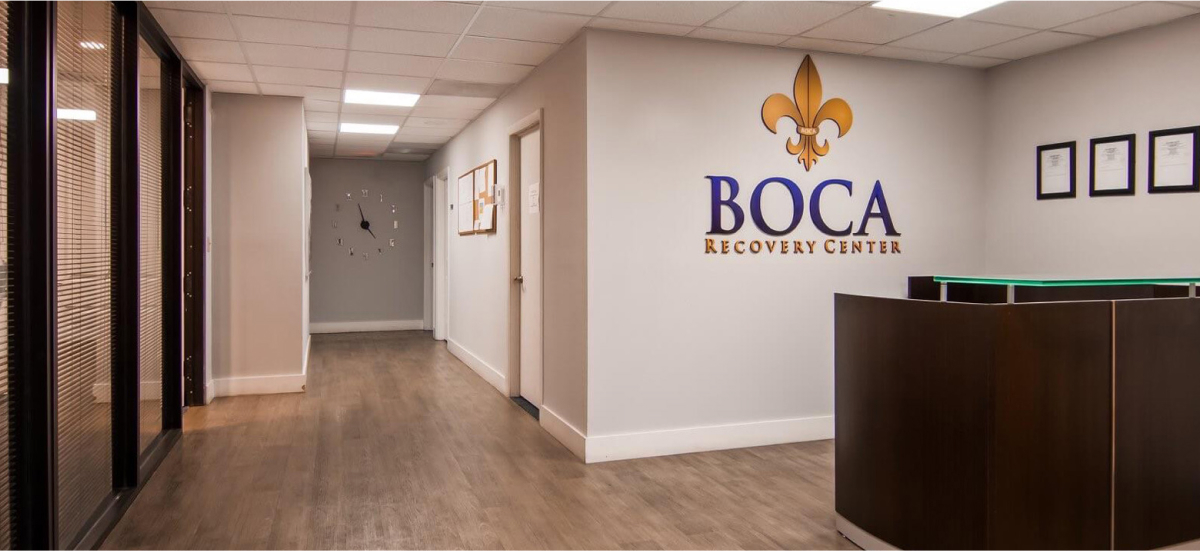If you or a loved one want to stop taking Suboxone, experts encourage you to talk to your doctor first. Together, you can discuss why you want to quit the drug and create a tapering plan to help you stop safely, without increasing your risk of relapsing to drug abuse.
At Boca Recovery, we have a dedicated medical detox team that can help you withdraw from Suboxone safely and securely, with 24/7 supervision to ensure your health and wellness around the clock. Our premium rehab facilities are the ideal place to begin your recovery journey.
On this page, we’ll discuss some of the symptoms you may experience during Suboxone withdrawal, as well as the timeline you can expect during your treatment and the different levels of help available.
Common Suboxone Withdrawal Timeline: When Symptoms Start and End
Suboxone is a combination of the drugs buprenorphine and naloxone. Withdrawal from this medication is described by the U.S. Food and Drug Administration (FDA) as mild when compared to withdrawal from other drugs like heroin.
Are you or someone you know struggling with addiction?
I may have a problem I am concerned for a loved oneBecause buprenorphine is in a class of medications called partial opioid agonist-antagonists, withdrawal from Suboxone shares some similarities to opioid withdrawal. However, the effects are milder since Suboxone is not a full opioid.
A person may experience some degree of flu-like symptoms, such as those associated with opioid withdrawal, when withdrawing from Suboxone. It has been described by people undergoing it as feeling like a cold. Typical symptoms of withdrawal include the following:
Agitation
Anxiety
Aching muscles
Watery eyes
Insomnia
Runny nose
Sweating
Yawning
Abdominal cramping
Diarrhea
Dilated pupils
Goosebumps
Nausea
Vomiting
Suboxone withdrawal symptoms aren’t inevitable. The FDA recommends tapering a Suboxone dose slowly to allow the brain time to adjust. This method could reduce or eliminate some troublesome withdrawal symptoms.
Researchers say some tapers aren’t successful, and people relapse to drugs when they try to quit Suboxone. Working with a treatment team is critical. If you experience a surge in drug cravings, your team could adjust your tapering schedule and ensure you’re not so uncomfortable that you return to drug misuse.
Suboxone Withdrawal Timeline
With the typical buprenorphine and naloxone dosing of about 12/3 mg to 30/7.5 mg daily, withdrawal is mild. Symptom timeframes can vary, and some people can have more complicated or severe issues than others. If you use a taper, your withdrawal symptoms could be completely different.
In the 1990s, researchers examined a typical buprenorphine withdrawal syndrome in male patients. Based on that research, a typical withdrawal process might look like the following:
| Time Period | Likely Symptoms |
|---|---|
| 48 hours after the last dose | Early symptoms appear, such as agitation, anxiety, muscle aches, and insomnia. |
| 3 days after cessation | Late symptoms of withdrawal appear, such as digestive distress and goosebumps. |
| 10 days after cessation | Physical symptoms fade, but mental health signs such as depression may appear. |
Top 3 Symptoms of Suboxone Withdrawal and How to Treat Them (Infographic)
Symptom 1
Psychiatric Symptoms (anxiety, depression, irritability): Mental health support and crisis stabilization services
Symptom 2
Gastrointestinal Distress: IV fluids
Symptom 3
Muscle Pain: FDA-approved medications to manage discomfort
Can You Die From Suboxone Withdrawal?
Suboxone withdrawal can be uncomfortable, and without medical supervision, it can be dangerous. While it’s rare, complications like dehydration can appear during a difficult withdrawal. You should never attempt this process without a doctor’s help.


Suboxone Side Effects: Breaking Down All Side Effects
Managing Suboxone Withdrawal: Treatment Options
If you’re interested in quitting Suboxone, talk to your doctor and create a plan together. The FDA recommends using a tapering schedule to help your body slowly adjust to the lack of the drug. This approach could help you ensure that you’re not so uncomfortable that you relapse to hard drugs.
A taper should be personalized. Your doctor will determine how much you’re using now, and how uncomfortable you are right now. Then, you’ll take a smaller dose over several days, weeks, or months.
Talk to your doctor about what a taper might look like and how you should get started. Don’t quit your drug abruptly or try to taper on your own. A doctor should monitor this process and ensure you go through it safely. At Boca Recovery, we offer different levels of treatment to help you navigate Suboxone withdrawal safely. Contact our admissions team today to learn more about our various programs, from medical detox and residential rehab to outpatient services and aftercare.
Doctors do not recommend stopping Suboxone cold turkey. Doing so can increase your risk of experiencing uncomfortable withdrawal symptoms, like goosebumps, nausea, and muscle pain. Instead, most experts recommend tapering your dosage under the supervision of a medical professional until you no longer need the medication.
Suboxone withdrawal can last up to a month, though most physical symptoms should subside after around 10 days. Withdrawal timelines are not one-size-fits-all and can vary based on the individual’s body composition, how long they’ve been on the medication, and their typical dosage.
The primary ingredient in Suboxone, buprenorphine, has a half-life of 25 to 70 hours. This medication can stay in your system for up to one week, although detection times will vary. For instance, it can be detectable in urine tests for seven days but usually clears from the blood within two days.
It’s best to withdraw from Suboxone through a professional medical detox program, not at home. If you do decide to go through this process on your own, be sure to speak with your medical doctor before beginning. They can develop a custom tapering schedule for you, which will include slowly lowering your Suboxone dose until it eventually reaches 0 mg.
- Buprenorphine Sublingual and Buccal (Opioid Dependence). (January 2022). MedlinePlus.
- Buprenorphine Tapering Schedule and Illicit Opioid Use. (February 2009). Addiction.
- Course and Treatment of Buprenorphine/Naloxone Withdrawal: An Analysis of Case Reports. (July 2012). The American Journal on Addictions.
- Principles of Effective Treatment. National Institute on Drug Abuse.
- Suboxone Prescribing Information. (March 2021). U.S. Food and Drug Administration.
- Discontinuing Methadone and Buprenorphine: A Review and Clinical Challenges. (April 2023). Journal of Addiction Medicine.












